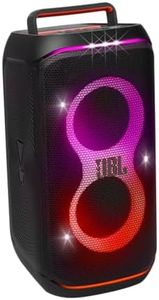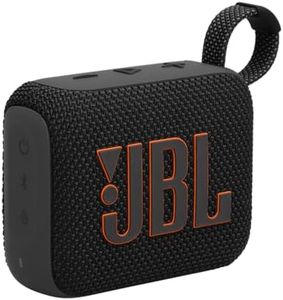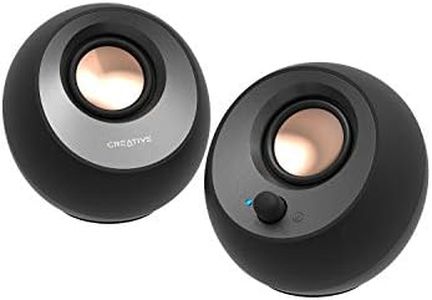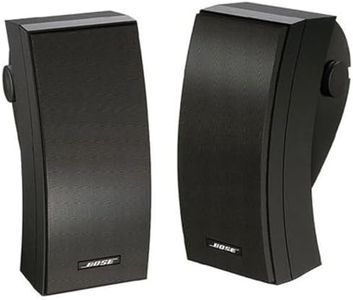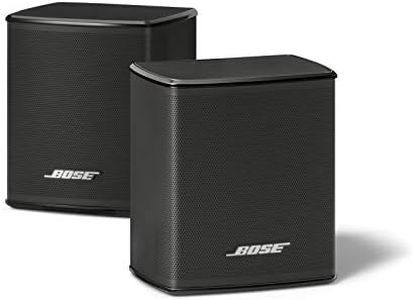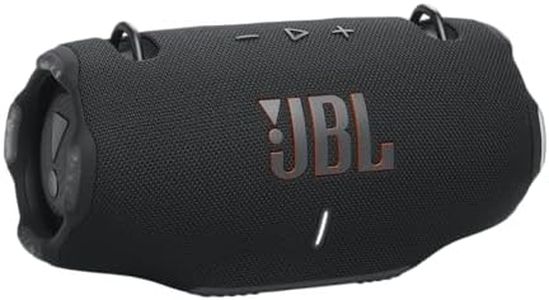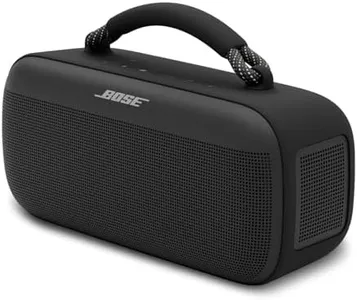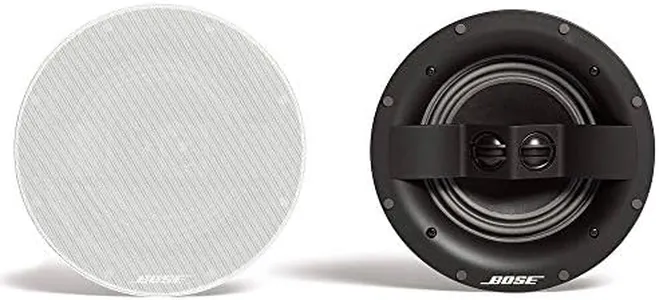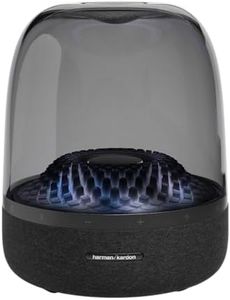We Use CookiesWe use cookies to enhance the security, performance,
functionality and for analytical and promotional activities. By continuing to browse this site you
are agreeing to our privacy policy
10 Best Stereo Speakers
From leading brands and best sellers available on the web.Buying Guide for the Best Stereo Speakers
Choosing the right stereo speakers for your needs can make a big difference in how you enjoy music, movies, and more at home or work. To find the best fit, start by thinking about where and how you plan to use the speakers—like the size of your room, the type of audio you’ll play, and whether you listen casually or want a more detailed sound experience. Understanding key features of speakers can help you narrow down your options and select the ones that will sound best for you.Speaker SizeSpeaker size refers to the physical dimensions of the main driver (the part that makes sound), usually measured in inches. Larger speakers often produce deeper and richer bass, making them suitable for larger rooms or if you enjoy full-bodied music. Smaller speakers tend to fit better in tight spaces and are often better for casual listening. When picking a size, consider both the space where you'll put them and how much you value powerful bass versus a more compact form.
Power Handling (Wattage)Power handling is the amount of power, measured in watts, that speakers can handle safely from an amplifier. Higher wattage speakers can get louder without distorting, and are great for bigger rooms or for those who love cranking up the volume. Lower wattage speakers are fine for small rooms or quieter listening. Your choice should match the size of your space and how loud you want your audio to be; just make sure your amplifier’s output doesn’t exceed what the speakers can handle for long periods.
ImpedanceImpedance, shown in ohms, tells you how much resistance the speakers give to an amplifier’s signal. Common values are 4, 6, or 8 ohms. Generally, 8-ohm speakers are compatible with most audio equipment, while 4-ohm speakers may need more specialized amplifiers. If you already own an amplifier or receiver, check its compatibility and match the impedance to avoid damaging your gear and to get the best performance.
Frequency ResponseFrequency response describes the range of sound a speaker can produce, measured in hertz (Hz). A wider frequency range (for example, 40 Hz–20,000 Hz) means the speakers can play both deep bass and clear treble. Look for speakers with a frequency response that covers at least 60 Hz to 20,000 Hz for most music, but if you want to really feel the lower bass, go for ones that extend below 50 Hz. Your choice depends on whether you want balanced sound or you’re sensitive to deep bass or bright highs.
SensitivitySensitivity indicates how loud a speaker will get with a given amount of power, shown in decibels (dB). A higher sensitivity means the speaker will sound louder at lower power, which is helpful if your amplifier isn’t very powerful or if you want efficient speakers for larger spaces. Choose higher sensitivity (over 90 dB) if you need more volume with less power, or lower sensitivity if you have a powerful amplifier and are not concerned with efficiency.
Speaker Type (Bookshelf vs. Floor-standing)The type of speaker—bookshelf or floor-standing—refers to its size and placement. Bookshelf speakers are compact and designed to sit on shelves or stands, ideal for smaller rooms or closer listening. Floor-standing speakers are bigger, stand on the floor, and usually offer more open, powerful sound suitable for larger spaces. Base your choice on your available space and whether you want a discreet option or a speaker that makes an impact.
Connectivity OptionsConnectivity means how the speakers hook up to your audio system. Some only use traditional speaker wire, while others offer extra features like Bluetooth or auxiliary inputs for easy connection to phones, TVs, or computers. If you want simple, wireless listening or plan to use the speakers with multiple devices, look for models with expanded connectivity; if you’re connecting to a dedicated stereo system, wired options are typically enough.
Build Quality and MaterialsBuild quality covers what the speaker is made of and how it feels. Well-made speakers with sturdy cabinets and quality driver materials often produce better, more accurate sound and last longer. Speakers made of wood or dense materials help reduce unwanted noise and vibrations. If you care about longevity and the natural quality of sound, look for speakers with excellent build quality and choose materials that match your taste and listening needs.

